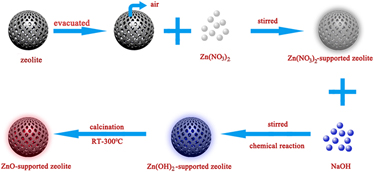Crossref Citations
This article has been cited by the following publications. This list is generated based on data provided by
Crossref.
Wen, Hongjian
Zhou, Xinhua
Shen, Zhichuan
Peng, Zhicheng
Chen, Huayao
Hao, Li
and
Zhou, Hongjun
2019.
Synthesis of ZnO nanoparticles supported on mesoporous SBA-15 with coordination effect -assist for anti-bacterial assessment.
Colloids and Surfaces B: Biointerfaces,
Vol. 181,
Issue. ,
p.
285.
Gao, Fan
Zhou, Hongjun
Shen, Zhichuan
Qiu, Huanbin
Hao, Li
Chen, Huayao
and
Zhou, Xinhua
2020.
Synergistic antimicrobial activities of tea tree oil loaded on mesoporous silica encapsulated by polyethyleneimine.
Journal of Dispersion Science and Technology,
Vol. 41,
Issue. 12,
p.
1859.
Gao, Fan
Zhou, Hongjun
Shen, Zhichuan
Zhu, Guowei
Hao, Li
Chen, Huayao
Xu, Hua
and
Zhou, Xinhua
2020.
Long-lasting anti-bacterial activity and bacteriostatic mechanism of tea tree oil adsorbed on the amino-functionalized mesoporous silica-coated by PAA.
Colloids and Surfaces B: Biointerfaces,
Vol. 188,
Issue. ,
p.
110784.
Charoensri, Korakot
Shin, Yang J.
Kim, Kyu C.
and
Park, Hyun J.
2022.
Active Packaging Material Based on Immobilized Diatomaceous Earth/Zinc Oxide/High-Density Polyethylene Composite for Sea Food and Products.
Polymers,
Vol. 14,
Issue. 23,
p.
5228.
Yang, Xiaotong
Yu, Qingjun
Gao, Wei
Tang, Xiaoning
Yi, Honghong
and
Tang, Xiaolong
2022.
The mechanism of metal-based antibacterial materials and the progress of food packaging applications: A review.
Ceramics International,
Vol. 48,
Issue. 23,
p.
34148.
Wang, Lili
Zhao, Zhiqiang
Li, Xiangyu
Zhao, Xiaomin
Li, Shuokang
and
Li, Huijun
2024.
Ecofriendly dual-function cotton fabric with antibacterial and anti-adhesion properties based on modified natural materials.
International Journal of Biological Macromolecules,
Vol. 271,
Issue. ,
p.
132698.
Pu, Shan
Zhang, Jiale
Shi, Chaoting
Hou, Xiandeng
Li, Ka
Feng, Jinhua
and
Wu, Lan
2024.
A multifunctional chitosan based porous membrane for pH-responsive antibacterial activity and promotion of infected wound healing.
Journal of Materials Chemistry B,
Vol. 12,
Issue. 29,
p.
7191.
Ma, Teng
An, Yaxin
Zhang, Jiaxin
Wen, Zengliang
Lian, Dandan
Lu, Jianjun
and
Wang, Hua
2025.
Structural and Performance Effects of Self‐Assembled Composite Antibacterial Additives on PP Melt‐Blown Nonwovens Based on Melt Reaction Extrusion.
Journal of Applied Polymer Science,
Vol. 142,
Issue. 11,
Perez-Landeros, M.A.
Ruiz-Camacho, B.
García-Ruiz, G.
López -Godinez, J.
Guerra-Contreras, A.
Reyes-Martinez, J.E.
and
Medina-Ramírez, A.
2025.
Synthesis of bifunctional zincosilicates with remineralizing potential and antibacterial properties.
Materials Chemistry and Physics,
Vol. 346,
Issue. ,
p.
131317.
Hrenović, Jasna
and
Rajić, Nevenka
2025.
Application of Modified Natural Zeolite—Clinoptilolite for Bacterial Control in the Environment.
Materials,
Vol. 18,
Issue. 10,
p.
2411.
